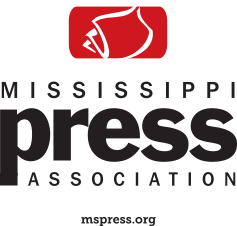A tall figure looms in the foyer of the Thad Cochran Research Center on a rainy day in Oxford. Larry Walker is a physically imposing man who seems to fill the halls as he navigates his way through the center’s labyrinth on the way to his office. Since Walker is no longer a full-time employee of the University of Mississippi, his office is not grand – a desk with scattered papers and boxes and a bookshelf littered with scientific literature fill the small space.
Walker apologizes about the size of the space and mentions that he doesn’t come to campus often. He lives near Jackson, Tenn., and travels to the university only when necessary. Walker also jokes about the length of his career at UM: “I know I only look 45, but I’ve been here for a long time.”

The office is no measure of the man’s impact on the university, however. Walker was the director of the National Center for Natural Products Research for 15 years and a research faculty member in the field of pharmacology for 20 years before that. As director of the NCNPR, Walker oversaw all natural products research, including the cannabis research project. For nearly 50 years, UM was the only federally licensed grower of marijuana in the United States. Having such a readily available supply of product has made UM the worldwide leader in cannabis research.
“There are probably about 120 cannabinoids (the chemicals in cannabis that produce its hallmark effects), and probably 50 have been discovered in the last 15 years,” Walker said. “Of those, 75% were discovered here at Ole Miss, so we’ve done a lot to understand the plant and the chemistry of it.”
To put into perspective how novel cannabinoid discoveries are, the structures of THC and CBD were first identified in 1964. THC, or tetrahydrocannabinol, is the substance that produces the “high” associated with smoking marijuana, and CBD, or cannabidiol, has been found to reduce pain and inflammation but does not produce a high and is not addictive. Walker says that these discoveries were so recent that when he was studying for his Ph.D. in pharmacology, the structures had not even been included in textbooks.
Walker addresses the question of why opiates and some other narcotics are not designated as Schedule-I by the federal government while marijuana is.
“I think the market incentives are not as high (for THC) as for opiates, so they don’t have that broad demand. Also, with opiates, we’ve known what the active principle is for the last 100 years, so (the research) was much further ahead,” he said.
So, how did a cannabis research program wind up in Mississippi? In the 1960s, the federal government decided to fund the research of cannabis in order to find out if anything – good or bad – could come of it. A proposal was drafted, and UM won the bid to grow cannabis for any federal research projects that were started thereafter.
A few years later, Congress passed the Controlled Substance Act of 1970, classifying cannabis as a Schedule-I drug, which labeled cannabis as having no legitimate medical use and also having a high potential for abuse. Fast forward a few decades and medical marijuana use is now legal in 37 states, though it remains illegal at the federal level. Mississippi adopted its medical marijuana law in 2022 and Walker generally approves.
“This is a really good program in terms of requirements for manufacturers for labeling and purity testing, so when you go to get a product, you can feel confident that it is what it says,” Walker said.
Now, Walker is calling for more collaborative efforts involving growers, distributors, the state and local researchers to optimize the benefits of a medical cannabis program.
“What we really need is a pretty robust clinical research program where we’re actually taking stuff that we already know exists and we already think may have benefits … we really need to understand dosing (and) how different people metabolize it. How it interacts with other drugs – (we need to answer) all those many, many questions,” he said.
Cannabis research continuing at UM is divided into three categories: continuing to understand production and structure of cannabis constituents, experimenting with certain cannabinoids to treat particular conditions in laboratory models and the clinical research program geared towards understanding medical cannabis strains and doses in real patients.
The University of Mississippi Medical Center recently directed clinical trials for a drug with the active ingredient of CBD. The oral solution was created by scientists from the NCNPR for use in these trials. Epidiolex is a similar FDA-approved drug that is used to treat seizures. It is the only cannabis-derived drug that has been approved by the FDA for use in patients as young as one year old, significantly improving health and quality of life for those who suffer from pediatric epilepsy.
Since Walker’s retirement from the NCNPR, Ikhlas Khan has stepped in as the new director. Under Khan’s administration, the cannabis research program has continued to thrive, but Walker said the NCNPR is more than just marijuana.
“There’s no place in the country like this. … We have a lot of plants we’re working with that to me are more exciting than cannabis: more novelty, more, ‘Oh wow, this is something that nobody has seen before.’ … This is all part of our natural world. (We can’t synthesize drugs) the way that nature has done it in terms of providing all of this diversity that we haven’t even touched.”


























